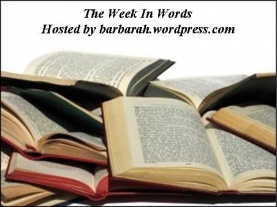With the end of July comes the end of Carrie’s annual Chronicles of Narnia reading challenge–which means that it’s time to wrap things up.
In this year’s trip to Narnia, I have explored Shasta’s seeking and Aslan’s sovereignty in The Horse and His Boy. My thoughts of the book centered around two Scriptural passages.
The first was Paul’s Mars Hill sermon in which he speaks of the Gentiles groping for God–just as Shasta (and Lewis himself) gropes for the joy the thought of the North sparks in him. Paul says that God is truly not far from the many gropers. Aslan, as a type of Christ, was also never far from the groping pilgrims. See my complete (er, complete written) thoughts here and here.
The second passage (or, perhaps more accurately, the second story) is that of Joseph telling his brothers that what they intended for evil, God meant for good. In a sort of parallel to Joseph’s story, Shasta experiences exile at the hand of jealous men, enslavement in a foreign land, and is ultimately used to bring deliverance to his people. Just like God was at work all throughout Joseph’s story, using the evil intentions of man to accomplish His own good purposes, so Aslan is at work throughout Shasta’s story. The characters in The Horse and His Boy have many intents, most of them evil–but it is Aslan’s good plan that prevails. Read my thoughts on this parallel here.
In addition to mining The Horse and His Boy, I did read a couple of biographies of Lewis.
The first, C.S. Lewis: Writer, Dreamer, and Mentor by Lionel Adey, I dismissed in my last Nightstand post–probably long after I should have.
The second biography, The Most Reluctant Convert by David C. Downing, was as different from Writer, Dreamer, and Mentor as two books can be (thankfully!)
Let’s just say that while Adey’s only apparent goal in writing Writer, Dreamer, and Mentor was tenure, Downing’s goal in The Most Reluctant Convert was clearly to tell a story–particularly the story of Jack Lewis’s religious conversion.
Where Adey discussed Lewis’s writings apparently to hear himself speak, Downing discussed them to show patterns of thought that Lewis held to at various times in his life.
In The Most Reluctant Convert, we read of Lewis’s naive childhood Christianity, his boyhood and adolescent atheism, his later dualism, the “baptism of his imagination” through reading George MacDonald. We learn of his “reluctant” conversion to theism–and finally of his wholehearted embracing of Christ Himself.
Downing posits that Lewis’s brilliance in apologetics and as a writer of semi-allegorical Christian works comes from his experience with every rejection of Christianity–and the process by which God overcame his every objection.
This was a small, but wonderfully informative volume about Lewis’s life-focusing especially on the conversion of his mind and heart.
I highly recommend this biography.

If you haven’t been by Reading to Know to check out some of the other posts from this month’s challenge, you’d best get over there! This year’s challenge page is found here–and Carrie’s concluding post (pending completion of a round up of everyone’s posts) is here.

